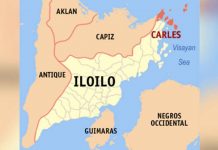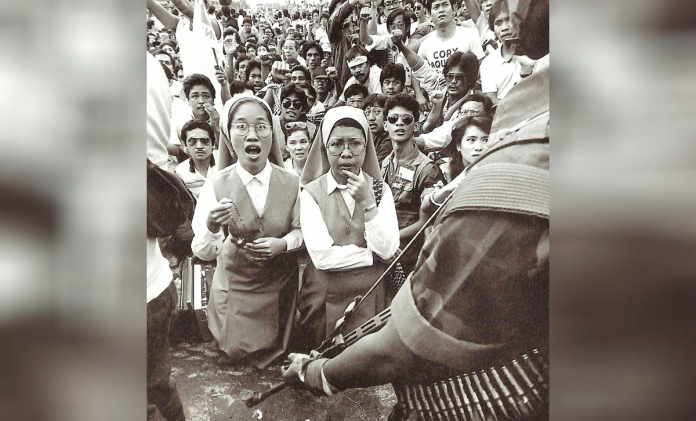
THE 1986 People Power Revolution gathered millions of Filipinos from all walks of life to march along Epifanio de los Santos Avenue (EDSA), the main artery of Metro Manila, to end the dictatorship of President Ferdinand E. Marcos Sr. and begin a new era marked by true freedom and democracy.
In 1985, Marcos Sr. was being pressured by the public and his US allies to declare a snap election. Meanwhile, after an organization formed to call for her presidency, Cory Aquino – widow of the assassinated senator Ninoy Aquino – received petitions drafting her to run against Marcos.
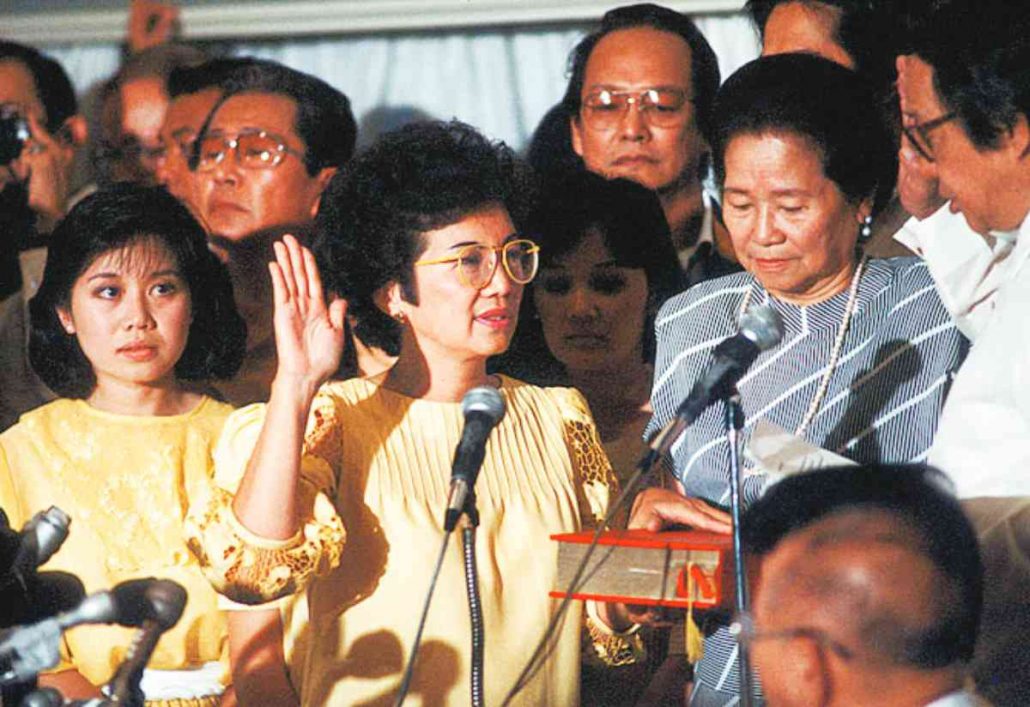
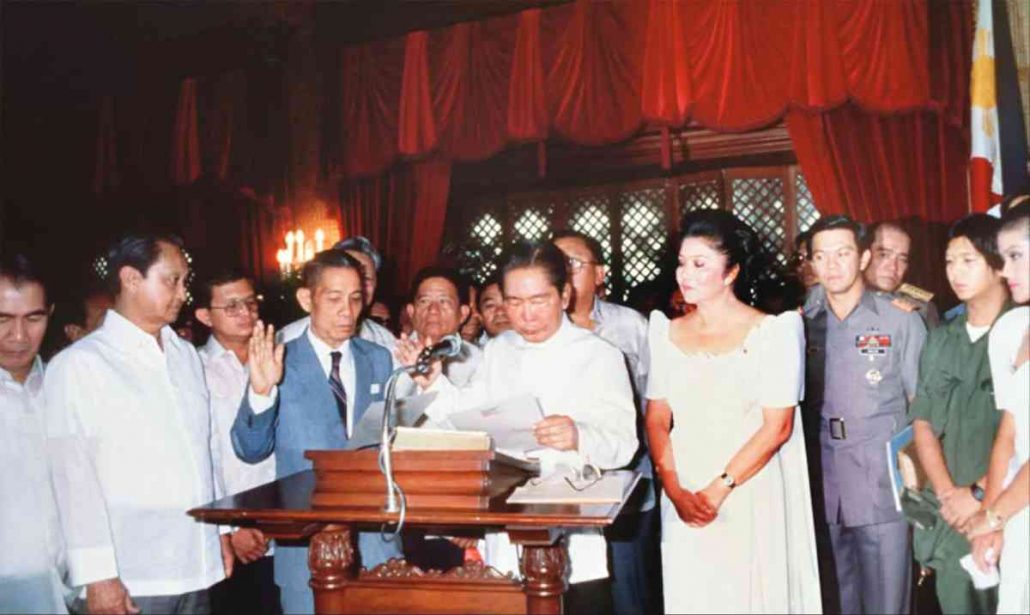
On election day, Feb. 7, 1986, the National Movement for Free Elections (NAMFREL) mobilized 400,000 volunteer poll watchers. Radio Veritas by the Archdiocese of Manila also publicly urged people to help ensure honest and fair elections.
Aquino took the lead in NAMFREL’s unofficial tally; however, when the official count started, Marcos’ lead was practically irreversible. Commission on Elections (COMELEC) computer technicians walked out of their posts in protest of alleged results tampering, and a multinational team of observers pointed out cases of election fraud by the ruling party.
On Feb. 22, 1986, Defense Minister Juan Ponce Enrile was finalizing plans for a coup to be led by Col. Gregorio “Gringo” Honasan. However, just a few hours later, their plans had been leaked to Marcos. Enrile contacted AFP Vice Chief of Staff General Fidel Ramos, asking for his support, which the latter granted. The two of them made their way to Camp Aguinaldo, where a few hours later they publicly announced their defection from the Marcos regime.
On Radio Veritas, Manila Archbishop Jaime Cardinal Sin called on people to show their support for Enrile and Ramos. Butz Aquino – brother of Ninoy Aquino – heard of the defection and called for people to meet him at Cubao so that they could march to protect Camp Crame and Camp Aguinaldo, where Enrile and Ramos bunkered down.
By midnight on Feb. 23, about 10,000 people were at Cubao, and they started their march to EDSA. By the time they reached Camp Aguinaldo, the number had grown to 20,000.
Throughout the next two days, the crowd at EDSA swelled to hundreds of thousands of people. A human barricade is formed, protecting the two military camps. The situation was tense and the scenes that played out were dramatic: protesters blocking the path of tanks that refused to fire into the crowds; nuns offering flowers to soldiers with guns trained on them; helicopters poised to attack the crowd instead turning and joining the revolt.

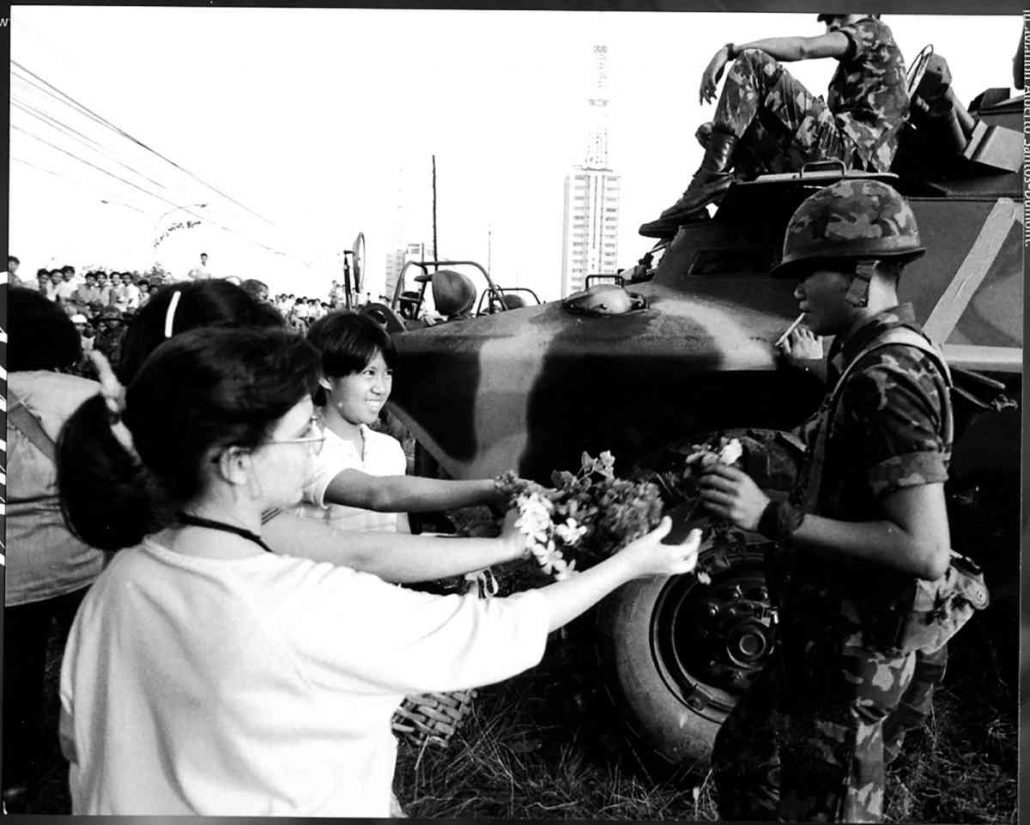
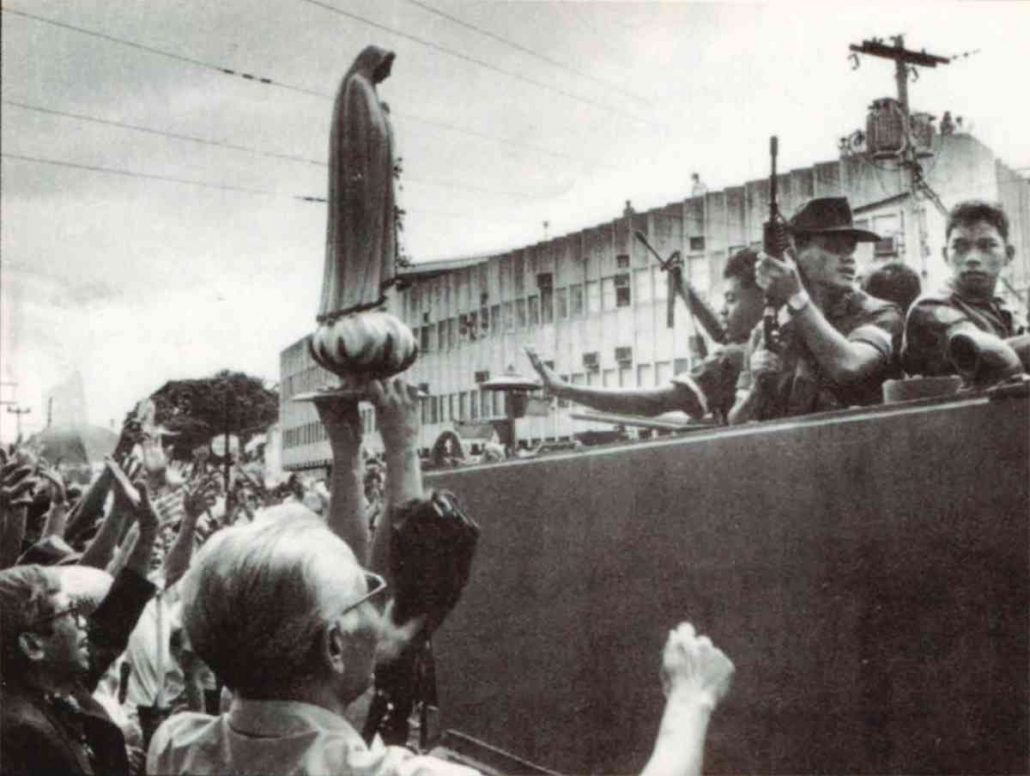
Even as more and more government and military officials joined the side of the rebels, Marcos Sr. refused to give up power.
On the morning of the 25th, Aquino is sworn into the office of President of the Philippines by Senior Supreme Court Justice Claudio Teehankee. The crowd sings the anti-Marcos anthem “Bayan Ko”.
About an hour later, Marcos’ inauguration ceremony begins – however, the live coverage is cut. Just hours later, following negotiations with the US for their assistance, Marcos and his family left Malacanang. Within the hour, news that they had fled the country was announced and shortly confirmed. On the streets, people rejoiced. A peaceful protest had just toppled a dictatorship.
The spirit of the movement was not confined to Manila; it also manifested through non-violent demonstrations staged in different cities nationwide—it was a revolution marked by its peaceful means, led by a nation united to reclaim liberty.
SOURCES:
EDSA PEOPLE POWER REVOLUTION – Amnesty Philippines. (2022, July 22). Amnesty Philippines. Retrieved February 24, 2023, from https://www.amnesty.org.ph/2022/07/protestph-edsa-revolution/
30th Anniversary of the 1986 EDSA People Power Revolution | GOVPH. (n.d.). Official Gazette of the Republic of the Philippines. Retrieved February 24, 2023, from https://www.officialgazette.gov.ph/edsa/







